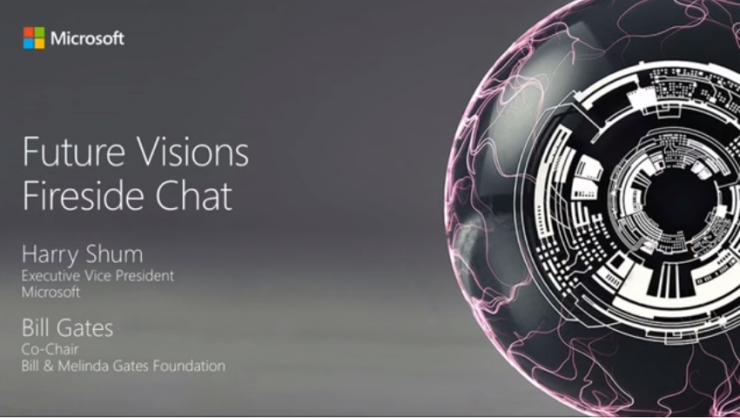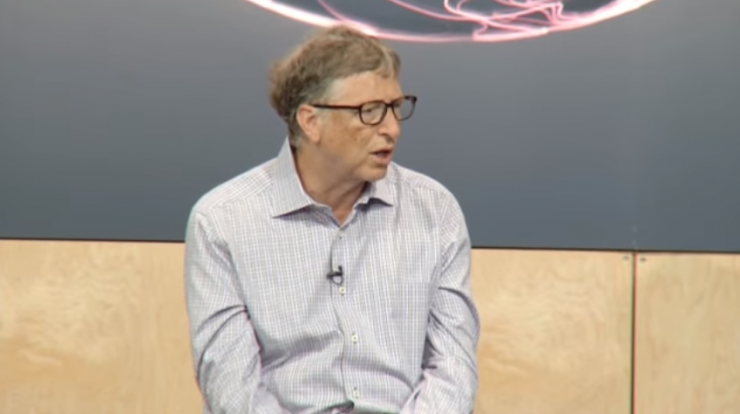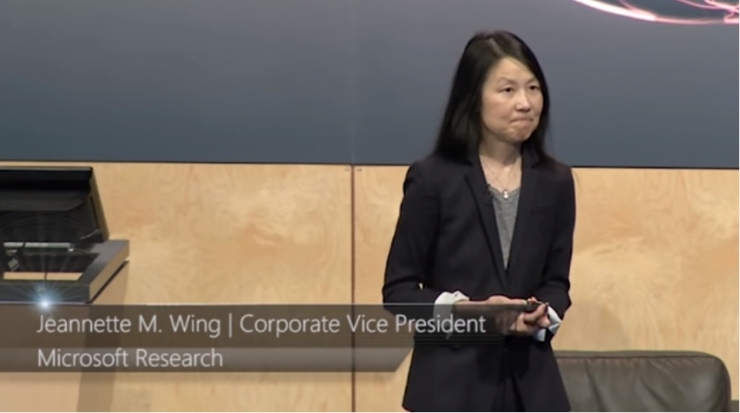Microsoft Research - Where to go next 25 years?
Microsoft Research (MSR) is a division of Microsoft that was founded in 1991 to study different computer science topics and issues. Microsoft Research stated that its goal is to “ support long-term computer science research. Not subject to product cycles. "
In Redmond, Washington, last week, leading academics and research scientists including Microsoft co-founder Bill Gates reviewed the achievements of computer science in the past 25 years and looked forward to the next 25 years for Microsoft Research. Expectation.

The 25th Annual Microsoft Research Institute's anniversary coincided with the annual staff summit, which involved 600 leading researchers and researchers. As one of the world’s top research centers, Microsoft Research has many highly-recognized experts in computer science, physics, and mathematics, as well as many well-known science award winners at Microsoft Research, including the Turing Award winner Tony Hall. James Nicolas Gray, Fields winner Michael Freedman, Wolfe winner Laszlo Lovasz, MacArthur Fellow winner Jim Blinn and Dijkstra Prize winner Leslie Lamport. For Microsoft Research, there are currently about 1,000 scientists and engineers located in laboratories around the world to conduct research on their own or with their peers.
The Redmond Institute of Microsoft was founded in 1991 in Microsoft Redmond, Microsoft (Redmond, Microsoft headquarters), Redmond Institute often cooperate with researchers from Cambridge, China, Beijing, and San Francisco.
Founded in Beijing in 1998, Microsoft Asia Research Institute has hundreds of researchers and scientists from around the world, more than 200 visiting researchers and students supporting research, mainly researching improved user interfaces, network and wireless communications, and new generations of multimedia. With Asian messaging technology and so on.
Founded in 1997 in Cambridge, UK, the Cambridge Research Institute of the United Kingdom has more than 100 researchers working on machine learning, information security, data mining, operating systems, programming and network technology. Microsoft’s UK Research Institute also has close links with the Computer Research Office at Cambridge University.
Microsoft Silicon Valley Research Institute was established in 2001 in Silicon Valley. There are about 25 researchers working on distributed computing, as well as research on information security, reliability, protocols, and resource addressers. August 2006 merged with the Microsoft Bay Area Research Center (BARC).
Microsoft India Research Institute was established in Bangalore in January 2005. It has about 50 researchers and a large number of interns supporting research. It mainly conducts basic research and applied research in various fields, and has close communication with many schools and research institutions.

At the meeting, Microsoft founder Bill Gates, Microsoft Research vice president Peter Lee and Microsoft Research vice president Jeannette Wing all published their personal views on Microsoft Research, including:


Bill Gates
Before humans do things in their own brain will have a general model, but for the computer this model does not exist.
In the field of research speed, image recognition, and text processing systems, more achievements are now achieved each year than in the previous 25 years.
Most of the institutes set up by companies in the industry are very unique. They can see the real needs of the industry and combine the needs and products.
He believes that Microsoft Research Institute (MSR) can do a good job in the next decade, 20 years or more.

Peter Lee, Vice President of Microsoft Research
Although the current pressure for researchers is very high, various projects need to accelerate the progress of research. But at the same time, almost all CEOs in the industry are madly looking for innovation. They are thinking about relying on researchers to discover the next Tipping Point, so they are full of pressure and hope for the future.

Jeannette Wing, vice president of Microsoft Research
Over the next 25 years, Microsoft Research will use technology to make human life better, understand the world more, and use our time more effectively.
At this summit, the current Microsoft CEO Satya Nadella emphasized Microsoft Research (MSR) as a key part of Microsoft and will continue to make major breakthrough contributions to different industries. Darron Green, head of the Microsoft Research Outreach Department, called on all researchers to use the latest machine learning and artificial intelligence tools that are open to the academic world and free of charge. Include the following:
Microsoft Cognitive Services Academic Knowledge API (Microsoft Cognitive Services Academic Knowledge API)
It has access to academic maps (it can be traced back to 1870 in its history) and currently contains 1.5 billion articles published and is growing at a rate of 1 million every month. In addition, researchers can use Microsoft Academic to explore the breadth and depth of Academic Knowledge APIs and Academic Graphs. There anyone can find quite a lot of related papers, conferences, researchers and other information in their field of expertise.
Open Academic Society (Open Academic Society)
The newly formed community wants to grow in the Academic Graph, members provide seminars, challenges and data sharing activities, and participates in promoting a huge data set of 44 million unique authors and 1 billion citations, any Everyone can benefit from it.
Malmo Project (Project Malmo)
The Open Plan aims to allow AI agents to accomplish humanoid tasks in the sandbox game Minecraft by developing more sophisticated intelligence .
The current research area of ​​Microsoft Research can be classified into 10 categories:
Algorithms and theories
Hardware development
Human-computer interaction
Mechanical learning, adaptation and intelligence
Multimedia and video technology
Data Search, Interception and Knowledge Management
Information Security and Encryption Technology
Social computing
Software development
System, Computer System Structure, Portability System and Network
Over the past 25 years, Microsoft Research has published more than 23,000 papers. The number of papers published each year has also increased from 177 in 1992 to over 6,300 per year. At Microsoft, researchers play an important role in driving innovation. They help Microsoft expand its next-generation products and develop computer research projects. The results have affected almost every Microsoft product, including Skype, Office, Cortana, Azure ML, Xbox, and Windows.
Although it is a purely academic form, Microsoft Research is far more than a simple academic institution. The skype translator and Cortana that have been released in recent years have caused people to exclaim that black technology products are mostly from the hands of Microsoft Research. In terms of academics, it has frequently appeared in academic conferences in recent years, including CVPR, ICML, SIGGRAPH and other awards. We have reason to believe that in the next 25 years, Microsoft Research will continue to surprise us in areas such as artificial intelligence and autonomous systems. Let's wait and see.
Via Microsoft Research Blog